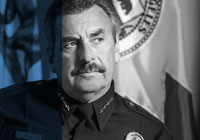The political year of 2015 in California will be remembered in part for its hand-wringing over voter turnout. Elections in Los Angeles plumbed new lows in participation, and other parts of the state weren’t much better. Today, a city council race in America’s second-largest city can draw less than 10% of registered voters — and remember, that’s a percentage of those who bother to register, not of eligible voters or of all residents. And don’t even mention school board campaigns.
This causes good-government types to despair. Low turnout, they say, enhances the power of special interests, shapes the field of candidates and issues, and is generally dispiriting: It is, indeed, hard to watch citizens shrug over a right so hard-won. This is, as leading political consultant Ace Smith said recently, “something everyone should be losing sleep over.”
What if, however, low turnout is a rational response to a campaign or government in general, rather than a rejection of democracy or an expression of voter irresponsibility? Rarely, after all, does one person’s vote make a difference. Moreover, the choices that campaigns offer frequently fail to create much excitement, and many races are so dominated by one candidate that they don’t generate any incentive to vote.
Consider three recent Los Angeles mayoral elections. In 2005, then Councilman Antonio Villaraigosa challenged incumbent Mayor James K. Hahn, a stark choice that generated a rough-and-tumble campaign and produced solid turnout: Roughly a third of L.A.’s registered voters cast ballots. Four years later, Villaraigosa ran for re-election against Walter Moore, a hapless neophyte. Sensing that the race was a blowout, 80% of those registered to vote took a pass. Who could blame them? Four years after that, City Council President Eric Garcetti and Controller Wendy Greuel, both moderate liberals, struggled to identify where they substantively disagreed. Unsure how to distinguish between them, three out of four registered voters stayed home.
The lesson of those races: Sharp differences and hard-fought campaigns generate interest and turnout. Blowouts and a lack of distinction between candidates tend to leave voters indifferent.
One solution to low turnout, at least locally, is structural. For generations, municipal elections have occurred in odd-numbered years, when there weren’t other races to draw voters to the ballot. Switching dates to coincide with state and federal campaigns would piggyback local elections onto more interesting contests.
Both cycles have advantages. Odd-year races allow the media to cover campaigns more fully, because that cycle gives news organizations an opportunity to devote more reporters, space and time to local races that otherwise would go to state or national contests. Better coverage means that voters learn more about candidates and issues. Even-year races, on the other hand, increase turnout. A registered voter may not make a trip to the polls for a school board election, but he might come to vote for a president and stick around long enough to mark choices in down-ballot contests.
After weighing those options, Los Angeles voters this year approved a measure to move city elections to even-numbered years. (It goes without saying that very few people bothered to vote on that issue, too.)
What’s missing in this debate, however, is a more satisfying solution: that government tackle big challenges and prove itself so meaningful that voters care who is in charge.
Imagine city government vigorously exploring ideas for rebuilding the middle class, or county government unveiling groundbreaking programs for the elimination of homelessness, paid for by a new local tax. Now imagine those subjects as election-year debates, with some candidates favoring tax breaks for businesses, others an income tax on the wealthy, and still others in support of cutting existing services to keep the new tax rate low. Those are the issues and conflicts that animate voters and drive turnout — not because of what day the election is held but because they represent serious alternatives for confronting this region’s problems.
A few months ago, Mayor Eric Garcetti, who has been a lukewarm supporter of the changed city election schedule, acknowledged that it probably will improve turnout. But Garcetti correctly identified the real issue: It’s not how many people participate on Election Day, he noted; it’s how many are engaged between elections and how active they are.
Actively engaged citizens, not indifferent voters or people at the polls to cast votes in higher-profile races, are what really could make a difference in both turnout and, more importantly, the quality of California democracy.
























